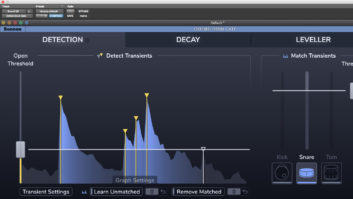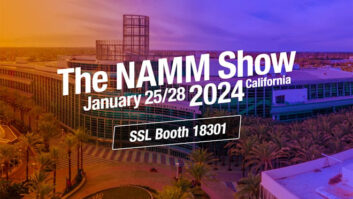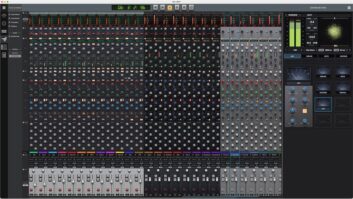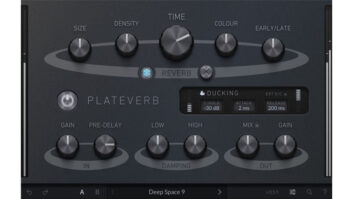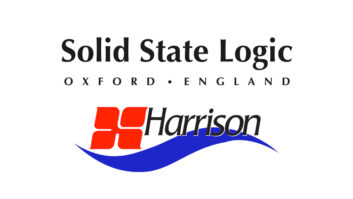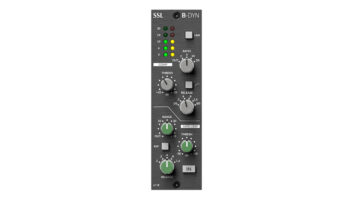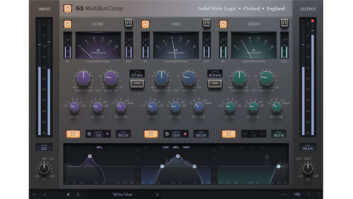Los Angeles, CA (November 21, 2019)—“The great thing about plug-ins is that there are so many choices,” says Jim Ebdon, who mixes both front-of-house and at home. But having so many choices can be overwhelming. What is an engineer to do? The short answer is, fall back on old favorites while glomming onto some of the latest apps that offer something unique or enhance the workflow.
Get Your Money’s Wurth
A lot of the plug-ins that L.A.-based studio engineer Greg Wurth uses speed up his initial work process, he says, allowing him more time to get creative. “You can’t spend hours on stuff, otherwise you’re losing money,” he says.
“What gets me about plug-ins these days is that they do things that hardware could never do. Those are the plug-ins I’m most interested in,” says Wurth.
Real-World Review: Eventide Instant Phaser and Instant Flanger MkII
For instance, there’s Sonnox’s new Oxford Drum Gate, which moves transient detection and control technology a step forward. “Drums are always an issue. How do I process them in a quick and easy way without hindering the sound? This just does its thing, without much fuss,” says Wurth. “It’s really intuitive. You don’t even have to know how a gate works.”
Wurth is happy to never see another emulation. “I feel like every day there’s a plug-in emulation of a piece of classic gear that you already had for 20 years,” he says. “It’s almost like re-releasing records. How many times are you going to remaster an old classic?”
Dave Way’s Way
Dave Way, who works out of his home-based Waystation Studio in Beverly Hills, agrees. “These days, I’m really into plug-ins that aren’t necessarily an emulation,” he says. One example is Steven Slate’s Kilohearts Multipass, a plug-in that would be time-consuming and costly to create with hardware. “It’s a multiband processor where you have distortion, delay, EQ and compressors, and you can put any of these plug-ins on any band. I could distort just the high end, or flange just the low-mids, or put a delay on just the midrange. It’s limitless. You can come up with the craziest ideas—and it sounds really good,” says Way.
But sometimes, only a re-creation will do. Swedish developer Klevgrand has two plug-ins that Way likes: DAW Cassette, a cassette deck emulation, and Reamp, offering different kinds of saturation and distortion. “Every once in a while, that’s the perfect thing,” he says.
Ebdon’s Universal Taste
Ebdon, who is based in Los Angeles and has most recently been mixing FOH for Sam Smith, relies on emulations of various vintage and more modern standards, he says. “I’m a big fan of the Universal Audio platform. I really like the Tube-Techs and the LA2-As. An LA2-A with a Tube-Tech CL1B and a Manley EQ is just a fantastic vocal chain. I slap CL1Bs across all the backing vocals and save a ton of money in outboard gear and freight.”
Dynamic EQ is also really handy, Ebdon continues. “I love the Sonnox Oxford Dynamic EQ on the UAD platform. That works really well live. And I do like a bit of parallel compression on the drum bus. My go-to is an SSL Compressor.”
Touring isn’t conductive to checking out the vast selection of plug-ins available, of course. “There’s only a certain amount of time to do a soundcheck, so where do you draw the line?” Ebdon comments. That said, “Brainworx does some great sounding plug-ins, as does McDSP.”
Another workflow enhancer for Wurth is Sound Radix’s Auto-Align, which analyzes microphone alignment and corrects any phase or comb filtering problems. “I work with Steve Vai, and when he wants to record, we’re hitting the record button now. He doesn’t care if I need to move a mic an inch to the right,” says Wurth. Similarly, files from other clients may have phase issues.
“But Auto-Align has been amazing and is part of my workflow when I start mixing a session. A lot of times you can find yourself trying to EQ or raise levels when the problem is phase.”
When he does need EQ, Wurth turns to a couple of favorites, including another plug-in from Sound Radix, Surfer EQ. “They’re inventing things that never existed,” he says of the developer. Surfer EQ is a parametric equalizer that can also read the note of an instrument and boost, say, the fundamental, enhancing consistency. “It doesn’t work for everything,” says Wurth, who likes it on bass. “You get a super even bass performance, and every note is the right fatness.”
More generally, “FabFilter Pro-Q is the utility EQ of all-time,” says Wurth, who often uses it to match tones between performances from different sessions or rooms. “It’s mind-blowing what that plug-in can do.”
Wurth also favors Plugin Alliance’s Adptr Audio Metric AB for referencing mixes and masters. “You can do phase correlation, dynamic level, it’s got a spectrum analyzer and some of the most intuitive loudness metering I’ve ever seen,” he says. “The other super powerful thing is that it has an A-B section where you can import mixes and it has auto level-matching. It matches the tracks so you’re not confused by loudness.”
Eminent ‘Domain’
Way recently started using Bob Clearmountain’s Domain, from Apogee Electronics. “There are three reverbs, and delays for each one, and de-essers and modulation—some really cool ways of changing things easily. I’ve been playing around with it every day,” he says.
“I’ve always been a big fan of Bob’s work,” Way adds. “There’s so much space and he fills it with the best reverbs and delays.”
Universal Audio’s Capitol Chamber is another Way go-to. “I’ve been using that a lot,” he says. “It feels like reverbs are starting to get really good.”
Ebdon’s plug-in choices ultimately depend on the music, of course. Smith’s music is not too modern, and any modern sounds coming to Ebdon from the stage are pre-processed, but he generally follows a less-is-more approach. “For a long time, I was contemplating whether you can even tell the difference between a dbx 160 and an LA2-A at 100 feet. Why don’t I just get a good balance going?” he says.
And for all the plug-in choices available, says Ebdon, “I’ve almost started thinking about having outboard gear,” because there are some attractive emulations in hardware, too. “Warm Audio make a fantastic 1176 and LA2-A that’s completely affordable—and you can find one to buy tomorrow.”
Ebdon does have one more software emulation that he could use, however, and has a plea for any developer paying attention: “I wish a company would make an emulation of a BSS DPR-901,” a discontinued four-band dynamic equalizer. “That was such a brilliant, simple analog tool.”
Sonnox • www.sonnox.com
Universal Audio • www.uaudio.com
Klevgrand • https://klevgrand.se
Apogee Electronics • https://apogeedigital.com
Sound Radix • https://www.soundradix.com
McDSP • www.mcdsp.com
Slate Digital • www.slatedigital.com
Warm Audio • www.warmaudio.com
Plugin Alliance • www.Plugin-Alliance.com
